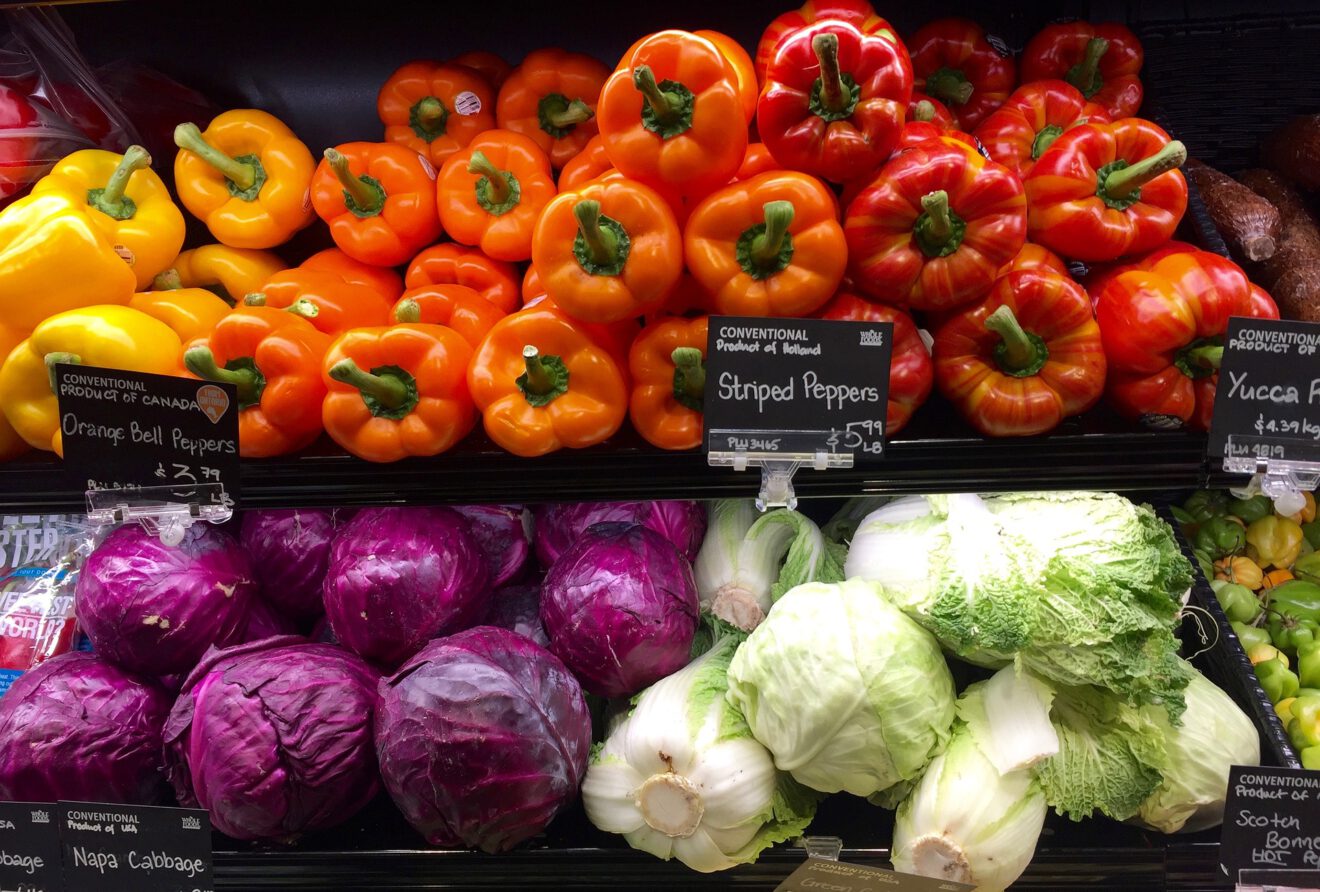Sign up for Produce Industry SmartBrief today, free.
Consumer demand for organic fruits and vegetables was already on the rise before March 2020 and the craving for fresh produce surged even more after the pandemic hit and people’s focus on health and wellness shifted into overdrive.
Sales of both organic and conventional produce soared in the second quarter of 2020, growing by double digits in both dollar value and volume, fueled both by new concerns about healthy eating and the panic buying that defined the start of the pandemic.
Now, inflation has consumers making tougher choices in the grocery store and rising prices have become a factor in decisions shoppers make in the produce aisle, especially when deciding between organic and conventional fruits and vegetables.
But, while the volume of organic produce sales dipped slightly in the second quarter of this year from the year-ago period, sales measured by dollar value were up 3.7%, according to the Organic Produce Network’s Organic Produce Performance Report, which analyzed retail sales data compiled by Nielsen. The report covered sales in a range of retail channels including supermarkets, convenience and dollar stores and mass merchants.
The findings indicate that budget-conscious shoppers made tougher choices in both organic and conventional produce purchases amid rising prices – sales of organic produce by volume declined 2.8% while the conventional category fell 2%.
Organic produce sales have been rising steadily in the past decade or so. In its most recent Organic Farming survey, the USDA reported a 27% increase in sales of organic vegetables grown in the open between 2016 and 2019, a 44% jump in sales of fruits and tree nuts and a 49% rise in sales of vegetables grown under protective covering and indoors.
The next USDA survey is due out this December and it’s likely to reflect further increases – in the 2019 report, 29% of farmers surveyed said they planned to increase production of organic produce.
Another report, this one from The Hartman Group, found that 60% of consumers surveyed reported buying organic fresh produce in the past three months, and the report also reflected consumers’ growing interest in organic foods in other categories including plant-based meat and dairy alternatives.
Pricing plays a role
Inflation has driven up prices throughout the produce section. Average prices for conventional fruits and vegetables grew 9.2% to $1.71 per pound, while organic, which started from a higher price point, rose 6.7% to $3.22 per pound, according to the OPN report.
The increases reflect the fact that prices for some organic products surged while others grew more modestly. For example, the average price of organic avocados grew more than 20% in the second quarter from the year-ago period, resulting in a 6% increase in sales by dollars while volumes fell 13.5%.
Conversely, sales of organic bananas, the lowest priced fruit in the category, grew 4% by volume and 8% by dollar amount. Additionally, sales of blackberries, the only organic fruit that saw a price decrease, rose 28% by volume and 27.6% by dollars.
The roots of organic certification
The seal we know today that signifies produce that meets the standards for USDA organic certification began in 1990 when Congress passed the Organic Foods Production Act with the goal of setting national standards for organically produced food. Until then, the word “organic” didn’t really have an official definition or any rules about when it could be used to market products.
According to the USDA “Produce can be called organic if it’s certified to have grown on soil that had no prohibited substances applied for three years prior to harvest. Prohibited substances include most synthetic fertilizers and pesticides.”
The rulemaking process took more than a decade and the final rule took effect in October 2002. After that, growers and food producers that wanted to use the “certified organic” label had to qualify for certification by an accredited third-party certifier.
Organic versus local
The Organic Produce Network’s report covers the quarter through May, which ended just as farmers market season was getting underway in many parts of the country. Farmers markets, which weren’t covered by the report, feed demand for local produce and are often a more affordable option for stretching grocery budgets during the season.
Farmers selling certified organic produce at seasonal markets have become more common, but it’s also not rare to find farmers selling fruits and vegetables grown using organic practices without the certification.
Earning certification can be an expensive process and, during the three years of transitioning fields, crops grown in those fields can’t use the organic label. Still, the farmers that grew the crops can take them to local farmers markets and connect with consumers interested in where their food comes from and how it’s grown.
And, as inflation continues to drive up grocery prices, local farmers markets are also becoming more attractive to cash-strapped consumers looking to keep healthy produce in their diets.
“I know a lot of people before would say that shopping at the farmers market was more expensive than the grocery store, but now those prices are getting a little closer,” registered dietitian Adante Hart told CNBC earlier this summer.
Read more from SmartBrief:
- Fancy food brands find growth potential in the pandemic
- How fancy food brands are faring amid the shifting supply chain
- Sugar reduction trend makes way for alternative sweeteners
________________________________________________
If you liked this article, sign up for Produce Industry SmartBrief, a free email newsletter . It’s among SmartBrief’s more than 250 industry-focused newsletters.
